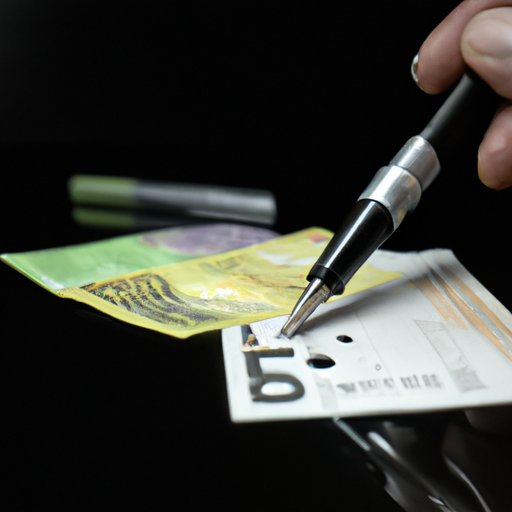
Introduction
Counterfeit bills have been around for centuries, and as technology has advanced, so have the methods used to create and detect fake money. As a consumer or business owner, it’s important to know how to tell if money is genuine to protect yourself from fraud and financial loss.
5 Simple Ways to Check if Your Money is Genuine
There are 5 simple steps you can take to check whether your money is genuine or not. Firstly, look for watermarks by holding the bill to the light. You should see a faint image of the person on the bill. Secondly, check for serial numbers. These should be the same color as the Treasury Seal, and each note should have a different serial number. Thirdly, feel the texture of the money. Genuine money is slightly raised, whereas counterfeit money usually feels smooth. Fourthly, examine the red and blue fibers that are embedded in genuine money, and fifthly, tilt the bill to look for color shifting ink that changes color when tilted.
Counterfeit Detection: How to Spot Fake Money in 4 Easy Steps
For detecting fake money in more detail, there are 4 easy steps you can follow. Firstly, examine the printing quality, such as the sharpness of lines and details. Secondly, check the texture of the paper, as genuine money is made from a special blend of cotton and linen, whereas counterfeit money usually feels thicker or thinner. Thirdly, compare the money to genuine currency of the same denomination and series. Finally, use a magnifying glass to check for microprinting, which should appear sharp and clear on genuine money, whereas counterfeit money will look blurry.
A Beginner’s Guide to Identifying Counterfeit Bills
Many counterfeit bills have common traits that can help you identify them. For example, “Washed” bills may appear discolored, while incorrect coloring or blurry images are also common traits. Also, the images on genuine bills are sharp and clear while counterfeit money usually appears to be blurry and not well defined.
Don’t Get Scammed: Key Indicators of Counterfeit Money Every Consumer Should Know
There are important indicators of counterfeit money every consumer should know. One of these is detecting the presence of starch on the money, which is a telltale sign that it is fake. A difference in the portraits, and positioned or spaced differently. Lastly, examining counterfeit detection pens can also be helpful, as these pens use iodine to detect starch in counterfeit bills, and will leave a dark mark if the bill is fake.
Expert Tips: How Professionals Identify Fake Money and Protect Themselves from Fraud
Professionals who handle money regularly are trained to identify counterfeit bills, and they use a combination of the techniques outlined above, as well as more advanced tools such as black lights, which can help detect certain fibers used in genuine money. Additionally, investing in counterfeit detection technology like counterfeit detection machines can save businesses time, money and prevent fraud.
Conclusion
Remember to take extra care when handling money and to use the tips provided to spot counterfeit money and prevent fraud. If you suspect a bill is fake, do not accept it and inform your local police department immediately. It’s always better to be safe than sorry and to be aware of the methods used to manufacture and detect counterfeit money.





